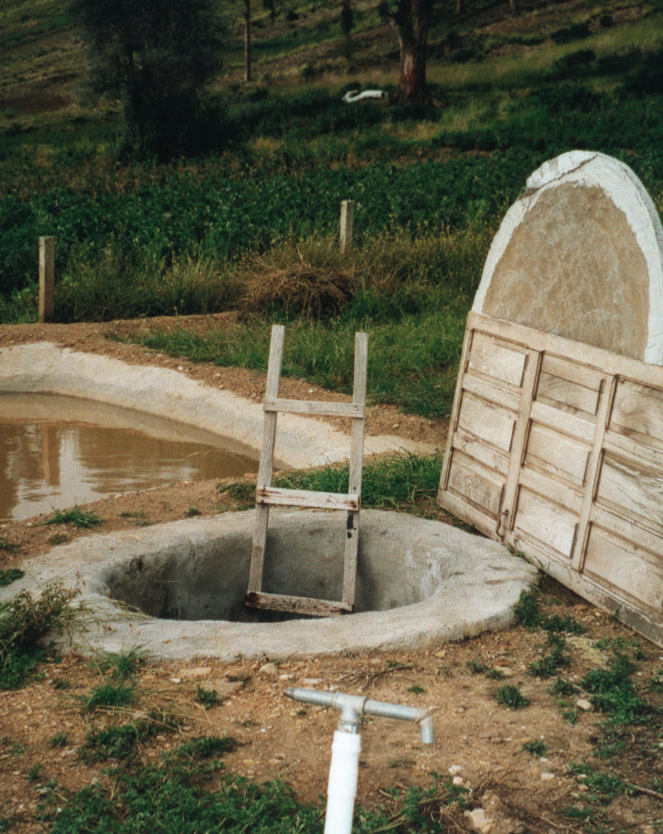Underground tank
For wells down to 35 m, rope pumps are often five times cheaper and more sustainable than piston pumps. Evaluations show that rope pumps on communal wells are being maintained by the users, if introduced properly. 90% of rope pumps remain operational, even after many years. Because of its low cost, the pump is also popular for domestic use. A survey among 5,025 rural families in Nicaragua indicates that a rope pump increases income, even if used for domestic purposes only. Families with a pump earn US$ 220 per year more than families without a pump. In Nicaragua the pumps are now being produced commercially by 20 workshops. Different models of Rope pumps were introduced in Africa. This introduction has not always been successful: in some projects over 80% of the pumps do NOT work! However, with the "right" models and the "right" user training, upto 90% remain in operation in Africa, as the Victory model in Ghana and the Elephant model in Zimbabwe have proved.

| Advantages | Disadvantages |
|---|---|
| Significantly cheaper than piston pumps. Easy to maintain. |
Not all introduction programs have been successful. |
